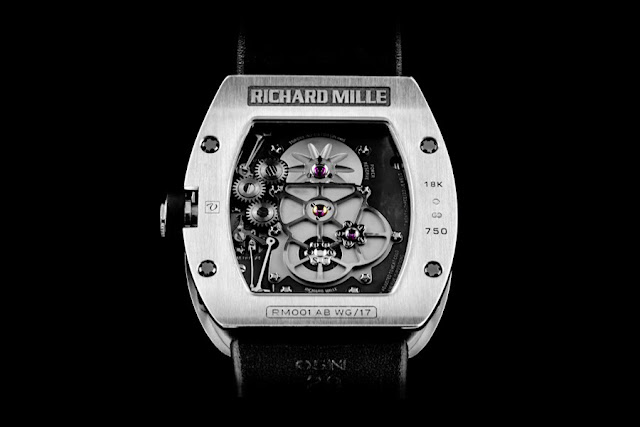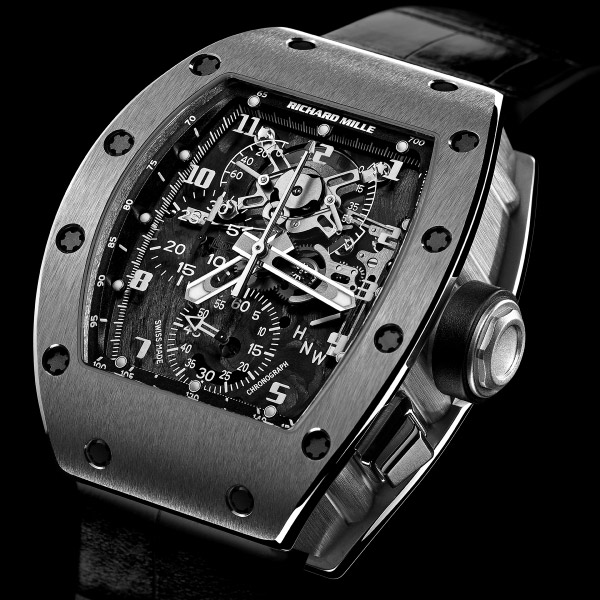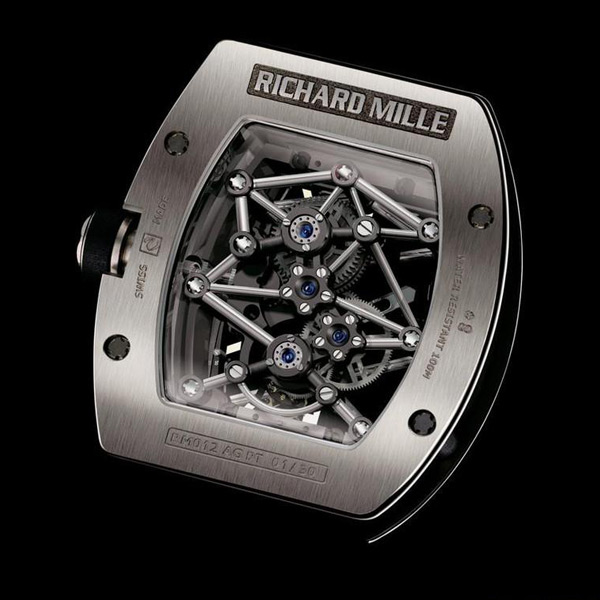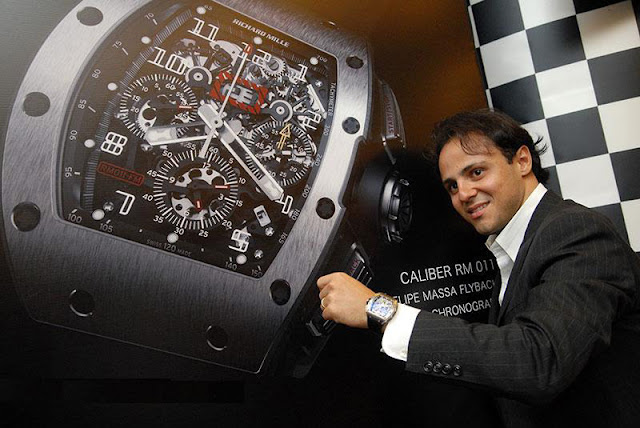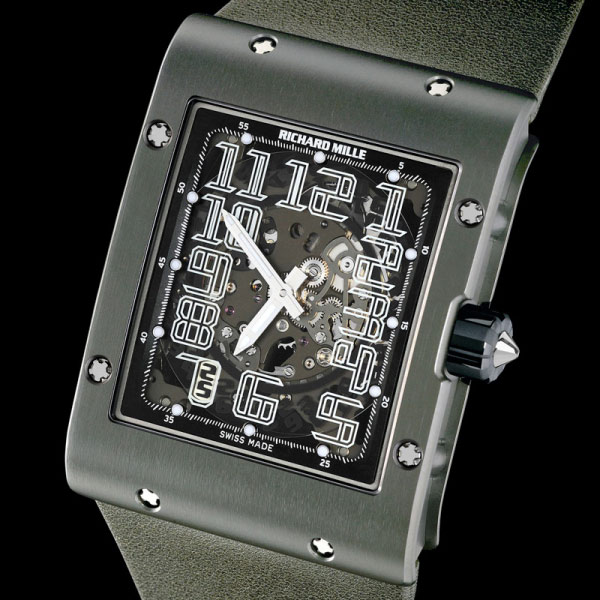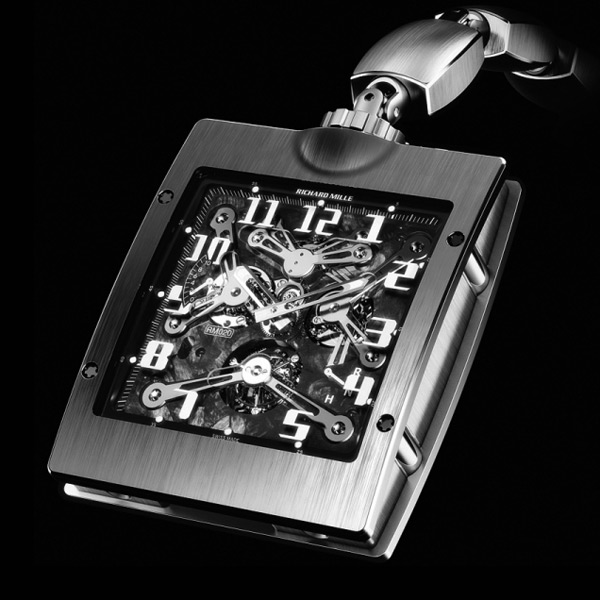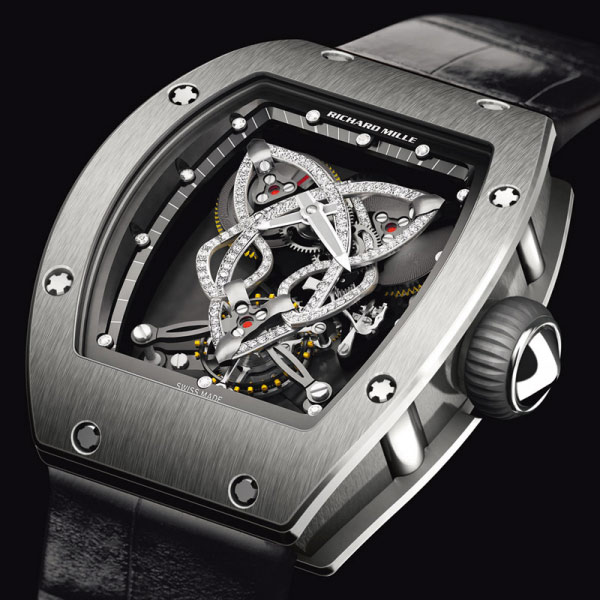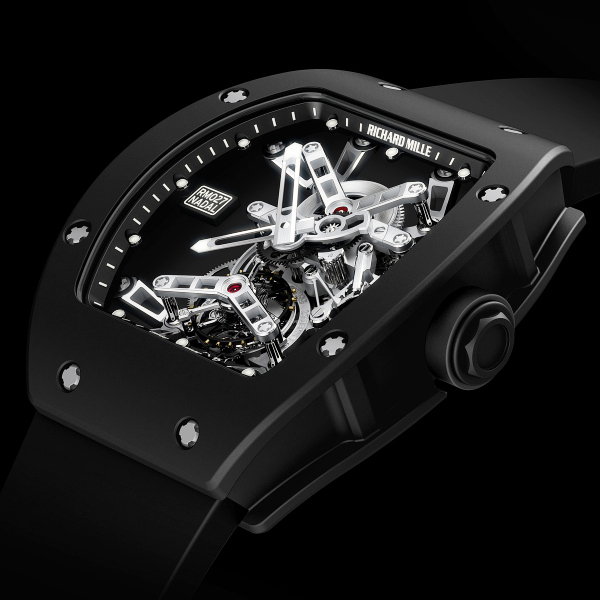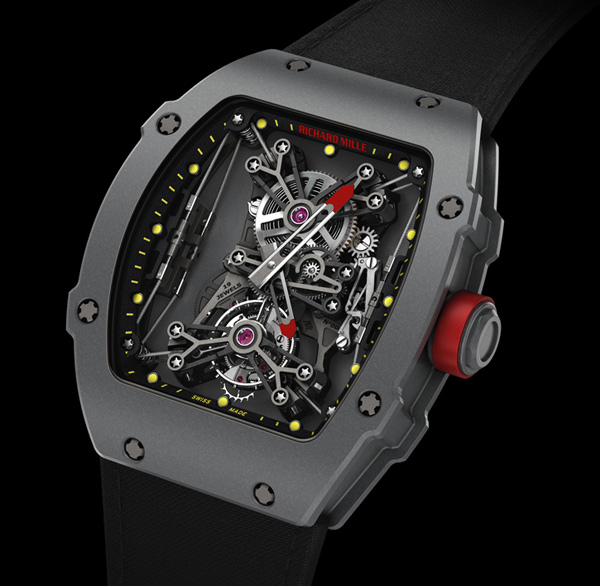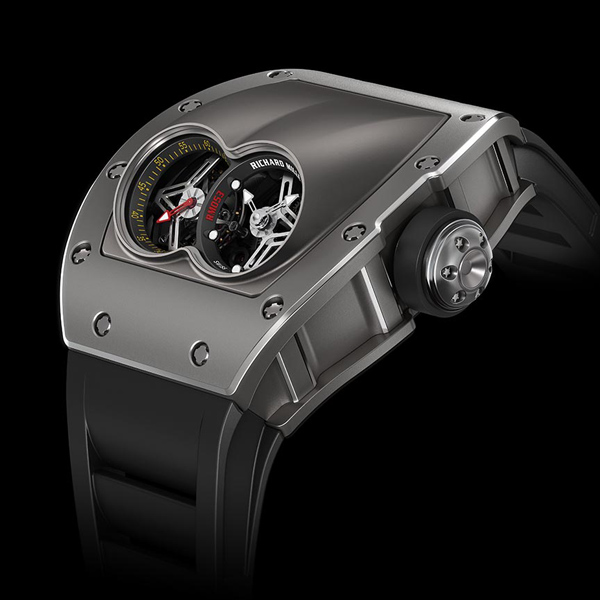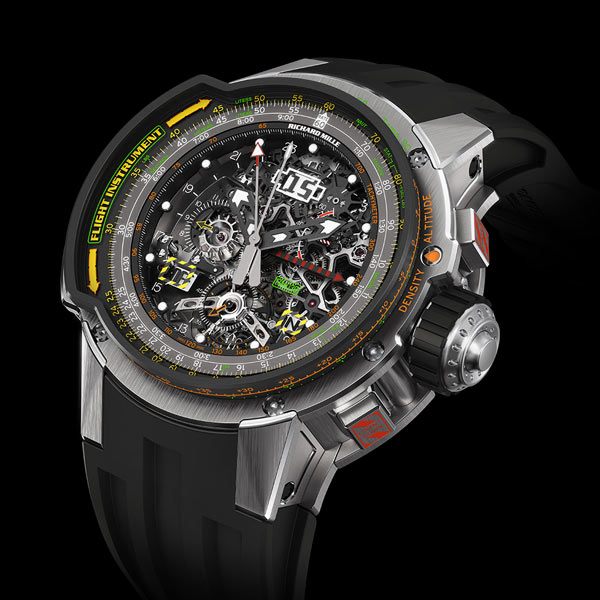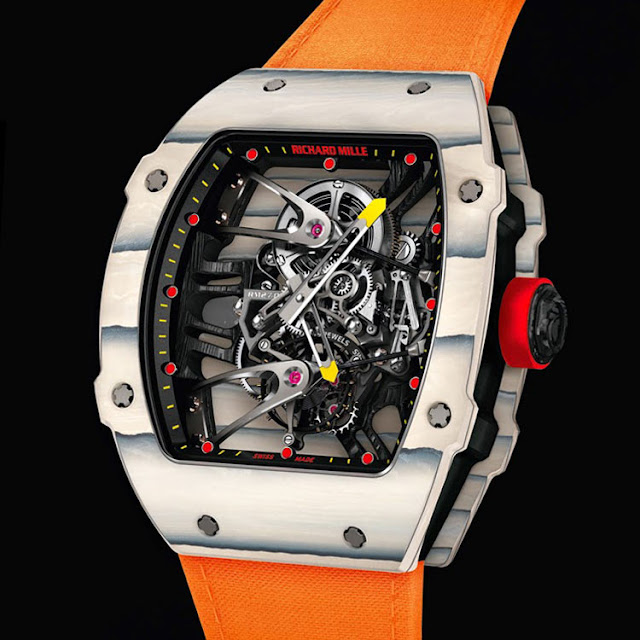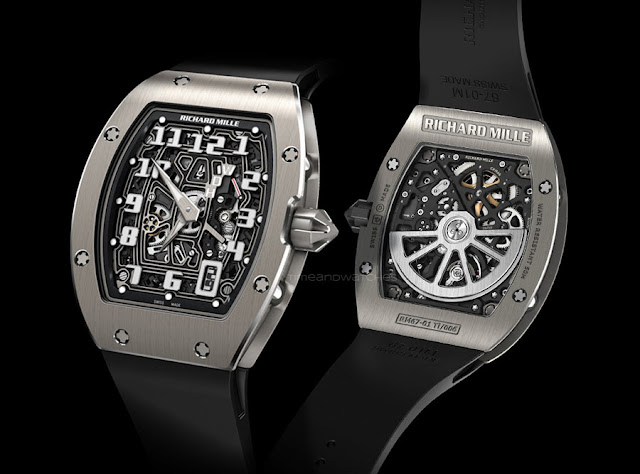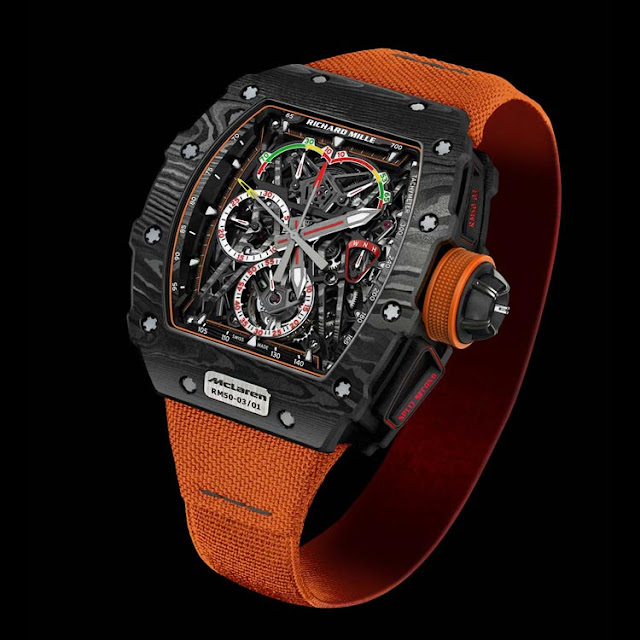2001: Richard Mille launches his first timepiece creating a new trend in watchmaking. At the origin of his venture a bold vision: applying to watches the techniques and the materials employed in the most innovative sectors, such as in F1 racing cars or airplanes.
From the very beginning, Richard Mille watches were born of experimental research on high-tech materials with a distinctive design to reinforce the idea of performance. In fact, one of the brand’s first slogans was: “a racing machine on the wrist”.
But, at the same time, Richard Mille demonstrated great respect for the Swiss tradition of fine watchmaking, creating extremely complex mechanical movements, assembled and finished by hand.
Born in Draguignan, France in 1951, Richard started his career in the watchmaking industry in 1974 and had management roles in various watch brands then becoming, in the early 1990s, managing director (and shareholder) of the watch division of renowned French jewellery firm Mauboussin.
It was in these years that Richard Mille met Giulio Papi, one of the most talented watchmaker of our times and Director of Research and Development at Audemars Piguet Renaud et Papi (APR&P), Audemars Piguet’s high-end watch making division.
In 1999, Richard Mille decided to create his personal brand of luxury watches with the objective to break the traditional codes related to high-end watches, often associated to a baroque style and precious materials like gold and platinum.
His extensive experience and numerous contacts in the industry helped him to establish active collaborations with some of the best manufacturers of movements and components in Switzerland.
The brand’s main legal entity – Horometrie SA – was established in 2001 by Richard Mille and Dominique Guenat and headquartered in Les Breuleux, a small village at an elevation of 1,038 metres (3,406 ft) above the sea level in the north-west of Switzerland, in the canton of Jura, not far from the renowned watchmaking centers La Chaux-de-Fonds and Le Locle.
Audemars Piguet also joined the project as a minority shareholder. Since the beginning, Audemars Piguet Renaud et Papi was the technology partner for the development of most complicated movements in the Richard Mille collection, including tourbillons and split seconds chronographs.
The Horometrie factory in Les Breuleux
The first timepiece was not a simple one. In fact, the Richard Mille RM 001 was a tourbillon model, one of the most prestigious horological feat. Only 17 pieces were produced.
The Richard Mille RM 001
The RM 001 was followed by the RM 002, the evolution of its predecessor with the addition of a torque indicator, and the RM 003 which also featured a second time zone.
In 2003, the RM 004 split-seconds chronograph was a natural development for a brand with sport in its DNA and was the first of a long series of high-performance chronographs.
The RM 004 in titanium and (below) in rose gold
The RM 006 was the first timepiece with a carbon-fiber baseplate. Carbon fiber revolutionized the aviation and automotive worlds for its qualities: strong, rigid, lightweight and highly resistant to contraction and expansion when exposed to temperature variations. Its dark look was a big plus for Richard Mille which wanted a black baseplate for this model. On the other hand, manufacturing such baseplate was extremely challenging and expensive because of the extremely difficulty to cut and drill with the accuracy required for watchmaking.
2004 marked the launch of several models including the exceptional RM 008, incorporating all the characteristics of the RM004 chronograph with the addition of a tourbillon, a combination which represented a first for the brand. The model also featured torque and power reserve indicators.
The following year, Richard Mille introduced the first timepieces for Ladies of the brand, the RM 007 and the RM 009, an experimental model in ALUSIC, a material frequently used in the construction of satellites and space stations.
In 2006, the RM 012, a tourbillon with a tubular architecture, minimalist structure and extreme manufacturing complexity, was introduced. Produced in a limited edition of 30 pieces in platinum, this watch had the explicit goal to revolutionize the traditional concept of a plate, on which are positioned wheels, by replacing it with tubes to create a three-dimensional architectural ensemble, reliable and efficient but extremely light and aerial.
Above and below, the RM 012 and its tubular structure
The RM 012 was the winner of the prestigious “Aiguille d’Or” award – the equivalent in watchmaking of the Oscar prize – at the Grand Prix d’Horlogerie de Genève 2007.
With the RM 011 Felipe Massa Flyback Chronograph, Richard Mille created one of its most successful chronograph that, over the years, will be produced in several variations developed in collaboration with other sport personalities like Roberto Mancini and Jean Todt.
Felipe Massa and the RM 011 Flyback Chronograph
That same year a new case shape made its appearance with the extra flat and rectangular RM 016, available in a variety of material including a titanium version with Titalyt, a treatment using electro-plasma to increase the hardness of the metal by creating a crystalline oxide ceramic coating.
The rectangular and extra-flat RM 016
With the RM 020 Tourbillon, Richard Mille provided a reinterpretation of classic pocket watches, a declaration of love for watchmaking traditions.
The RM 020 Tourbillon pocket watch
In 2009, the introduction of the RM 019, a tourbillon for Ladies, was Richard Mille’s answer to women’s growing interest for complicated timepieces. Over the years the brand developed a rich collection of timepieces for women, which now account for around 25% of the total sales of the brand.
The RM 019, the first tourbillon timepiece for Ladies
The first round timepiece produced by the brand was the RM 025 Tourbillon Chronograph “Diver’s Watch”. Housed in a titanium and rose gold tripartite case, the watch offered water resistance to 300 metres / 1000 feet, a depth that was only possible to achieve with a round shape.
The RM 025 Tourbillon Chronograph, a diver’s watch that was also the first round timepiece of the brand
Richard Mille kept demonstrating exceptional creative vitality by presenting several novelties each year. A big milestone, from both a technical and a marketing point of view, came in 2010 with the announcement of the RM 027 tourbillon, the world’s lightest mechanical wristwatches at just 19 grams, strap included. Created for Rafael Nadal, this hyper-expensive watch was worn by the famous tennis player during his matches.
The lightness of the watch was a requirement not just for a comfort reason but also because a lighter watch proved to be more resistant to shocks.
A watch that created lot of buzz, and not only in the watchmaking industry: the RM 027 Rafa Nadal
The RM 027 evolved in 2013 in the RM 27-01, a model inspired by suspended civil engineering infrastructures where the movement baseplate is attached to the anthracite-coloured carbon case by four braided steel cables just 0.35 mm in diameter.
Created to resist to extreme shocks and field-tested by Rafa Nadal (below): the RM 27-01
Partnerships have always been a key aspect of Richard Mille approach to the market and often lead to the development of surprising pieces. Far from being simple testimonials, Richard Mille’ partners actually participate to the development phase by testing and challenging the reliability of the watches.
Among the others, it is certainly worth to mention the RM 053 Tourbillon Pablo Mac Donough presented in 2013. Created for the world number one Polo player, this watch was characterized by an unconventional case in microblasted titanium and titanium carbide with a totally new case design inspired by the tonneau shape and engineered to tolerate the extreme shocks likely to occur during a polo match.
The RM 053 Tourbillon and, below, Polo’s champion Pablo Mac Donough
Later the same year, the first Richard Mille aviation watch made its appearance. The RM 039 Tourbillon Flyback Chronograph offered pilots the possibility to successively time different durations in a number of directions together with the disc of a second time zone.
RM 039: the first Richard Mille aviation watch
Introduced in 2012, the RM 056 created lot of buzz for its fully transparent case in pure sapphire. It was an exceptional achievement considering the extremely difficult process required for machining from sapphire a complex shape like a tonneau case.
With this model, Richard Mille gave a clear demonstration that products can always be perfected. In fact, with its first evolution, the RM 56-01, Richard Mille raised the bar by adding baseplate, bridges and third wheel in sapphire.
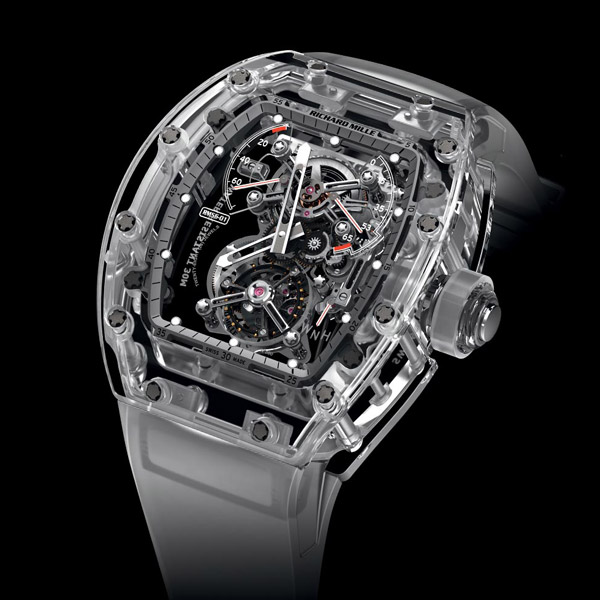
The RM 56-01 with case, baseplate, bridges and third wheel made in sapphire
The RM 56-02 Sapphire, created for the 2014 Edition of the Watches & Wonders Exhibition, went even further by incorporating the cable suspended movement originally developed for the RM 27-01 Rafael Nadal and creating a breathtaking mix of transparency, lightness and intricacy.
A second factory, the ultra-modern ProArt SA, was opened in April 2013 and dedicated to the production of Richard Mille watch cases and other components, including baseplates, pushers, bridges and bracelet parts in precious metals, titanium and composites. Built using environmentally friendly materials, this building was the first in the Canton of Jura to utilise geothermal heating and cooling systems.
In the following years, Richard Mille kept pushing the boundaries of innovation introducing unconventional and often unprecedented materials as well as new new production methodologies. You can read about this more in details following the link at the end of the article.
An example of the constant quest for new challenges was the Tourbillon RM 27-02 Rafael Nadal introduced on occasion of the 2015 edition of the tennis French Open at Stade Roland Garros. This watch featured the first skeletonised unibody baseplate where caseband and baseplate have been fused into a single piece, removing the need to attach the two components together: a solution requiring great knowledge and experience in micro-machining new materials. Inspired by the chassis of racing cars, this structure dramatically enhances rigidity and resistance to impacts.
Inspired by the chassis of racing cars, the RM 27-02
Showcased at the 2016 Edition of the Salon International de la Haute Horlogerie in Geneva, the RM 67-01 became the most sleek model among all tonneau shaped Richard Mille timepieces.
The extra flat automatic RM 67-01
The latest exceptional achievement came at the beginning of 2017 with the RM 50-03 McLaren F1, a masterpiece produced in collaboration with the famed McLaren Formula 1 constructor which established an exceptional record as the lightest mechanical chronograph ever made. Combining a tourbillon with a split seconds chronograph, the RM 50-03 weighs less than 40 grams, strap included.
The RM 50-03, the lightest chronograph ever produced
In a relatively short period of time since its foundation in 2001, Richard Mille was able to create timepieces which have become the ultimate symbol of wealth and success without being shiny or relying to the intrinsic value of precious metals or gems.
Founded upon three crucial elements – the best in technical innovation, the best of artistry and architecture, the best of the heritage and culture of fine watchmaking – the success of Richard Mille is also due to the capability to keep surprising the market so we are definitely eager to see what’s next.




























